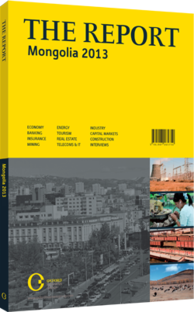OBG talks to A. Gansukh, Minister of Roads and Transportation

Interview: A. Gansukh
In your opinion, what are the top three policy priorities for the transport sector in 2013?
A.GANSUKH: The top three priorities are the development of the road infrastructure, the railway and the civil aviation sector. In terms of roads, we are aiming to connect 12 provincial centres to Ulaanbaatar by building an additional 4917 km of roads by 2016. We also expect to expand the railway network by 1800 km.
For civil aviation, we are awaiting parliamentary support for the national aviation policy. Once the policy is approved we can move forward with our existing action plan that outlines developments up until 2020.
How much will the state budget for transportation improvement be, and what role will foreign investment play in developing the sector?
GANSUKH: The new roads will be mainly financed through the Development Bank of Mongolia, which will raise the money through issued government bonds. We estimate that the total cost will be around $1.2bn. The current allocated budget for the completion of 1 km of road is MNT450m ($315,000); however, we are consulting the World Road Association to identify how much this budget needs to be increased in order to build better quality and more sustainable roads. We are hoping to grow the budget to MNT650m-850m ($455, 000-595,000) per km for future road projects.
It is estimated that the total construction cost for the railways will be approximately $5bn, out of which $1bn will be financed by the government, $1bn from private investors and the remaining $3bn from debt financing. These numbers may change though, as some private investors have already demonstrated interest in spending more than the estimated $1bn.
Regarding the development of civil aviation, we already have one programme in progress which foresees the investment of approximately $200m for the purchase of three aircraft. The Export-Import Bank of the US will be financing 85% of the deal and the Mongolian government will be covering the remaining 15%.
Where do you see the greatest opportunities for private investors to participate in the form of public-private partnerships (PPPs)?
GANSUKH: One of the bigger road projects will be the construction of a trans-Mongolian highway that will connect Russia and China at a distance of 990 km and an estimated cost of $2bn. We are looking to build this highway through a build-operate-transfer (BOT) agreement.
The previous government created an extensive list of around 220 possible PPP projects. Many of these are road projects and wherever possible we will provide the opportunity for the private sector to pursue PPPs.
Another idea is to invite the private sector into airport management for both the current and the new airport. Geographically Mongolia lies between Russia and China, and the government will pursue its policy of mainly receiving investment from those two countries. However, we are aiming to upgrade our standards to the level of European standards, so there will be a variety of opportunities for European investors to operate and participate in Mongolia’s growth.
What plans exist for increasing the railway capacity and how might these plans lower export costs?
GANSUKH: There has been a lot of confusion about how exactly the railway infrastructure is going to be developed, but now the plan is very clear. As mentioned, we expect to build 1800 km of new railway by 2016. In 2013 we are already planning to invest up to $1bn for the development of new rail infrastructure.
Besides improving regional transportation, these investments will connect Mongolian businesses to markets beyond Asia. Building additional railways will provide better access to Chinese port facilities.
In addition to more access to coastal areas, we hope to increase rail transport capacity to 60m tonnes of cargo per year. We expect that better access and volumes will significantly reduce the cost of transportation. High transport costs remain a bottleneck for many companies, but this will change as new railways come on-line.
You have reached the limit of premium articles you can view for free.
Choose from the options below to purchase print or digital editions of our Reports. You can also purchase a website subscription giving you unlimited access to all of our Reports online for 12 months.
If you have already purchased this Report or have a website subscription, please login to continue.

